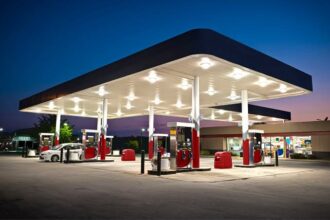Introduction
In recent years, a fascinating shift has been taking place in the global fuel market. Traditionally dominated by energy giants and petroleum companies, the fuel industry is now witnessing an influx of retail giants entering the fuel business. Major players like Walmart, Amazon (through logistics), Costco, Reliance Retail, and other supermarket chains across Europe and Asia are either launching fuel stations or partnering with fuel providers to offer fuel as part of their value-added services. This strategic move reflects a deeper transformation in both the retail and fuel sectors—driven by customer convenience, diversification, and competitive advantage.
Why Are Retailers Getting Into the Fuel Business?
1. Customer Footfall and Cross-Selling Opportunities
Fuel stations act as a magnet for customer traffic. When retailers operate fuel stations, they naturally increase footfall to adjacent or in-store convenience outlets. For example, a customer filling up fuel might also walk into the store to grab a coffee or shop for groceries. This cross-selling opportunity enhances revenue streams and increases customer retention.
2. Integrated Loyalty Programs
Retailers with fuel stations can seamlessly integrate fuel purchases into their loyalty and rewards programs. This provides customers with more value while encouraging them to spend across multiple services. For instance, earning points on fuel that can be redeemed on groceries or discounts creates a compelling ecosystem of spending.
3. Diversification of Revenue Streams
Retail is a highly competitive and seasonal business. By adding fuel as a service, companies diversify their income and create a more resilient business model. Fuel sales offer daily consistent revenue, helping stabilize profits during retail slowdowns or off-peak seasons.
Examples of Retailers in the Fuel Space
Walmart (U.S.): Walmart operates fuel stations at many of its supercenters and partners with companies like Murphy USA to expand its fuel services.
Costco: Known for discount fuel pricing, Costco’s fuel pumps drive high traffic to its membership-based stores.
Reliance Retail (India): Through its Jio-BP partnership, Reliance is integrating retail and fuel offerings across India.
Tesco (UK) and Sainsbury’s: Leading supermarket chains in the UK that have long operated petrol forecourts alongside their stores.
How Technology is Helping Retailers Succeed in Fuel
Retailers are leveraging technology and data analytics to optimize fuel pricing, manage supply chains, and personalize customer experiences. With apps, loyalty cards, and real-time fuel pricing, retailers are bringing a tech-driven edge to a traditionally static industry. Additionally, many are investing in EV charging stations, anticipating the future shift toward electric vehicles.
The Rise of EV Charging in Retail Spaces
As electric vehicles (EVs) grow in popularity, retailers are not only investing in traditional fuel pumps but also in EV charging infrastructure. By offering fast-charging EV stations in their parking lots, retailers are staying ahead of the curve and providing future-proof services. EV owners often spend more time in-store while their vehicles charge—creating more shopping opportunities.
Challenges Faced by Retailers in the Fuel Sector
Despite the potential, entering the fuel business is not without challenges:
Regulatory hurdles and environmental compliance
High capital investment in infrastructure
Complex logistics and supply chain management
Volatility in global oil prices
Retailers must navigate these challenges with careful planning, strategic partnerships, and operational efficiency to make their fuel ventures sustainable.
Future Outlook: Retail + Fuel = Convenience Ecosystem
The convergence of retail and fuel marks a new era in customer-centric business models. Whether it’s through direct operation, joint ventures, or strategic alliances, retailers are transforming the fuel station into a multi-purpose destination. The future may see more retailers bundling services like groceries, pharmacies, car washes, EV charging, and fast food—all centered around a fuel hub.
Conclusion
Retailers entering the fuel business is not just a trend—it’s a strategic evolution in modern commerce. It demonstrates how traditional boundaries between industries are fading, and how businesses are adapting to meet the needs of convenience-hungry, time-conscious consumers. As the lines blur between shopping and refueling, those retailers who innovate and integrate smartly will lead the next wave of retail-fuel synergy.



